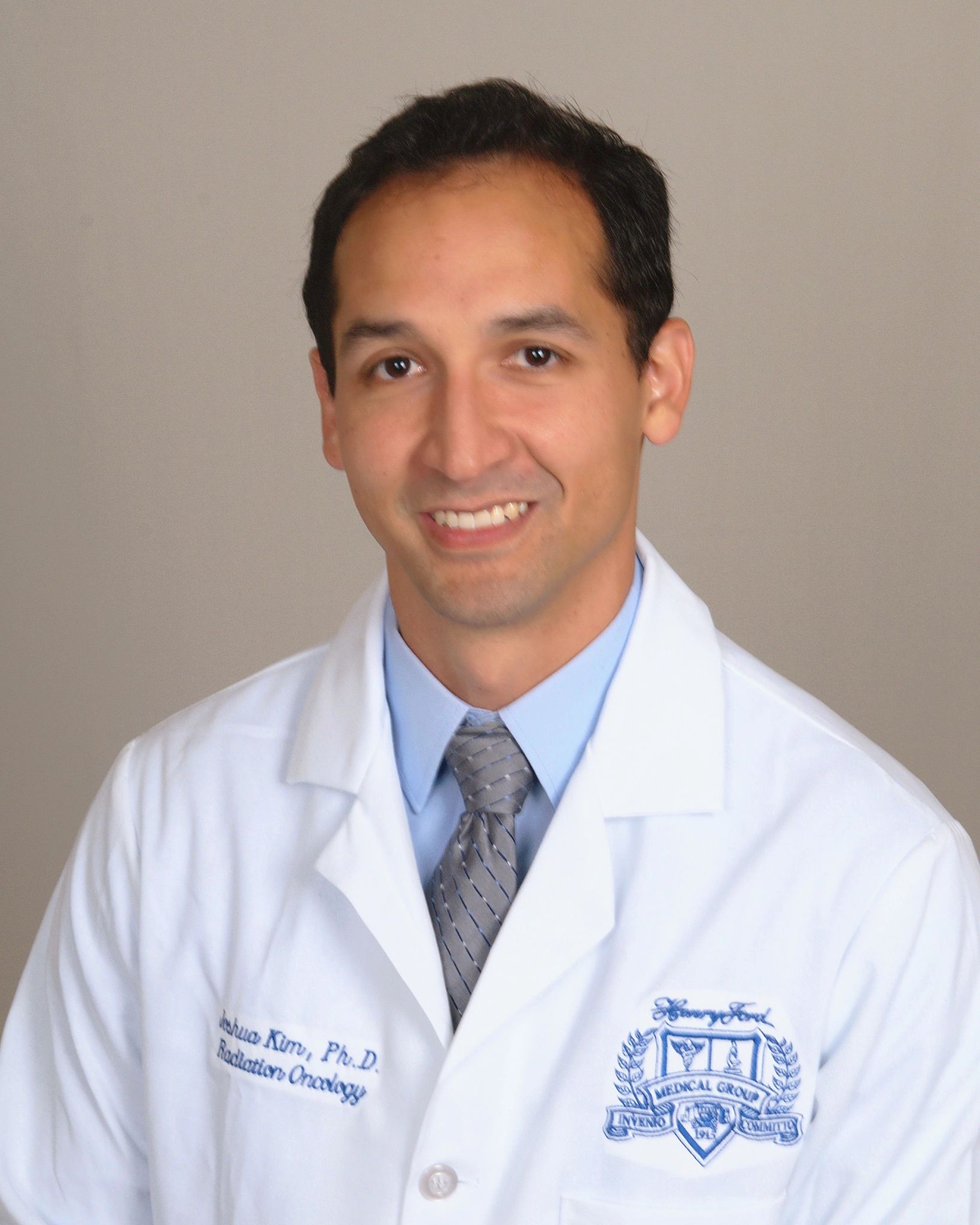The potential value of magnetic resonance imaging (MRI) for radiotherapy has been long recognized, but difficult to harness, due to lack of access, operational challenges and perceived tradeoffs in image quality.
While MRI can offer great value for early detection and treatment of cancer, more than half of the world’s population has no access to the imaging modality. Conventional MR systems pose several infrastructure challenges that can pose difficulties to transporting and operating the system. Additionally, they require qualified personnel to operate and set the scanning parameters. The confined exam space within conventional MR systems can also present challenges for certain patient groups, such as children or claustrophobic patients.
Newer MR systems have opened the door to broader RT use, and the proportion of treatment plans using MR images has quadrupled in recent years, increasing from 6 percent to 28 percent.1
At Henry Ford Health in Detroit, Michigan, one of the leading U.S. academic medical centers, the goal of implementing an MR-only workflow in radiation oncology has been a priority.
In October, the team plans to install a Siemens Healthineers MAGNETOM Free.Max RT Edition at its main cancer center— making it the first to integrate the technology in North America.
Joshua P. Kim, PhD, Director of Imaging Physics for Radiotherapy at Henry Ford, shared results from clinical protocol testing using the MAGNETOM Free.Max RT Edition during the American Association of Physicists in Medicine 2024 AAPM conference that highlighted some important MR simulation features, potentially speeding the time to treatment without compromising on image quality.
“During our time using the MAGNETOM Free.Max RT Edition with the team at Siemens Healthineers, we were excited to see that we were able to achieve image quality comparable to our existing higher field system while actually reducing the time that would be needed for a simulation appointment for a comparable protocol,” Dr. Kim shared. “This innovative technology with a large bore provides a step forward in maximizing the number of patients in our clinic that can benefit from the use of MRI as well as increasing the potential patient population for MR-only simulation, and we are very much looking forward to being the first site in North America to have the MAGNETOM Free.Max RT Edition.”

“This innovative technology with a large bore provides a step forward in maximizing the number of patients in our clinic that can benefit from the use of MRI as well as increasing the potential patient population for MR-only simulation, and we are very much looking forward to being the first site in North America to have the MAGNETOM Free.Max RT Edition.”
- Joshua P. Kim, PhD, Director of Imaging Physics for Radiotherapy at Henry Ford
Earlier this year, Dr. Kim and his team spent two days getting hands-on experience with the system while validating clinical protocols at a Siemens Healthineers customer experience center in Erlangen, Germany.
Part of the Siemens Healthineers imaging in RT portfolio, MAGNETOM Free.Max RT Edition was launched in October 2023, building on the MAGNETOM Free.Max diagnostic imaging scanner introduced in July 2021. The RT Edition includes additional software and hardware to enable radiotherapy planning. Featuring a 0.55T field, an 80-centimeter bore and a compact footprint, the system is designed to expand access to MR imaging capabilities at a lower total cost of ownership than traditional MR systems.
“Our MAGNETOM Free.Max RT Edition represents a valuable tool as care teams work to streamline the patient journey by increasing access to high-quality MR imaging,” said Chris Thomes, Vice President of Cancer Therapy Imaging for the Americas, Siemens Healthineers. “With a significantly lower total cost of ownership, this system puts MR imaging for radiotherapy within reach for more centers, alleviating scheduling challenges, and potentially reducing the time to treatment for patients.”

“With a significantly lower total cost of ownership, this system puts MR imaging for radiotherapy within reach for more centers, alleviating scheduling challenges, and potentially reducing the time to treatment for patients.”
- Chris Thomes, Vice President of Cancer Therapy Imaging for the Americas, Siemens Healthineers
For Henry Ford Health, the MAGNETOM Free.Max RT Edition represents an opportunity to expand access to MR imaging for radiotherapy, helping care teams access imaging quicker and shortening the time to treatment.
“We’re very excited about using the MAGNETOM Free.Max RT Edition technology” Dr. Kim said. “With the MAGNETOM Free.Max RT Edition you have an excellent user interface that is user-friendly and with a better safety profile.”
One area of focus for the team was brain scans, which represent the highest demand for MRI at the cancer center. The goal was to obtain similar quality images within 30 minutes, which is faster than the technology currently in place. As they tested their protocols to validate the system, the team was able to achieve better resolution images even faster —within 25 minutes.
“We were able to achieve image quality that is comparable or better to what we would expect to achieve,” Dr. Kim said.
The system may also enable the team in the future to use MR-only workflows in areas currently out of reach, such as the head and neck area, a region with high interest for target and OAR delineation. Head and neck cases are particularly challenging, Dr. Kim said, because they encompass both small, narrow spaces and broad regions that can result in homogeneity concerns for intensities.
Dr. Kim shared that the team also tested the system’s flexibility in establishing new protocols, such as for the pelvis region, adding “even though there isn't an existing clinical protocol currently, those sequences that are installed on the machine are very easy to modify in order to get a clinical sequence that you can use right away.”
Other benefits, Dr. Kim added, such as reductions in geometric distortion and reduced magnetic susceptibility – which leads to fewer artifacts from implants -- “increase the number of patients you can bring into the machines and converts like CT that you can actually use for treatment planning.”
The system’s smaller footprint represents another benefit, enabling the team to use the space previously designed for a 3.0T MR system to create three separate rooms. The more compact design means conducting simulation-related tasks – such as making thermoplastic masks – can be accessed next door, rather than transferring the patients to other areas of the center.
MAGNETOM Free.Max RT Edition’s 80-centimeter bore also represents an important feature, Dr. Kim added, enlarging the field of view to include key anatomy, avoiding tradeoffs made with current technology, which may have a smaller field of view. And, he said, it opens the door to MRI to patients that hadn’t previously been possible.
“It's very important feature because when you start incorporating the immobilization devices and start incorporating different body sites, it really increases the ability to scan almost any type of a patient,” Dr. Kim said.
Learn more
- Watch Dr. Kim’s presentation at AAPM.
- Hear how radiotherapy experts from around the world are integrating MRI into daily clinical routine in our recent MRInsights in RT user meeting.
- Access the MAGNETOM World, a peer-to-peer exchange of protocols, articles and tips from a global community of Siemens Healthineers MR users.
1 IMV 2020 Radiation Therapy Market Summary Report
The products/features mentioned herein are not commercially available in all countries. Their future availability cannot be guaranteed.
MR-only workflows for radiation therapy planning are not possible with MAGNETOM Free.Max RT Edition. RT protocols for head and neck and pelvis imaging on MAGNETOM Free.Max RT Edition are under development. Not available for sale.
The statements by customers of Siemens Healthineers described herein are based on results that were achieved in the customer's unique setting. Because there is no “typical” hospital or laboratory and many variables exist (e.g., hospital size, samples mix, case mix, level of IT and/or automation adoption) there can be no guarantee that other customers will achieve the same results.
Joshua P. Kim is employed by an institution that receives financial support from Siemens Healthineers for collaborations.